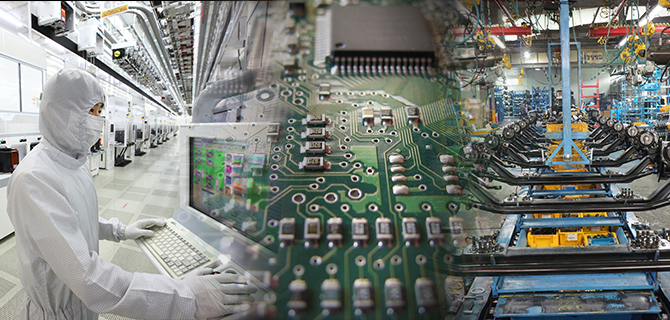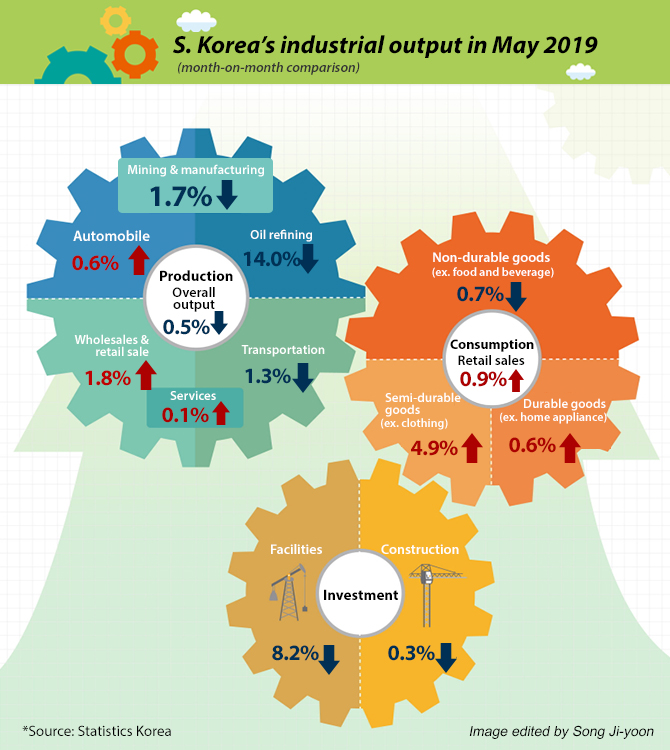
이 누리집은 대한민국 공식 전자정부 누리집입니다.

Biz News Korea(Eng)
- Collected
- 2019.06.28
- Distributed
- 2019.06.29
- Source
- Go Direct

South Korea’s industrial activity and capital investment sank in May after two months in the positive, hurt by softening in global demand amid the widening trade war between the United States and China.
According to Statistics Korea on Friday, the seasonally adjusted mining and factory output in May fell 1.7 percent on month, slumping back after gaining 2.1 percent and 1.9 percent in March and April, respectively. From the year-ago period, it was down 0.2 percent.
The main Kospi closed Friday 0.17 percent lower at 2,130.62. The Korean won gained 3.40, or 0.29 percent, against the U.S. dollar.
Automobile shipment rose 0.6 percent, whereas refined petroleum fell 14.0 percent and metal processing 3.6 percent.
Factory operation in May averaged 71.7 percent, down 1.0 percentage point from the previous month. Inventory level gained 0.9 percent on month and 8.3 percent on year.
Capital investment tumbled 8.2 percent on month after adding 10.1 percent in March and 4.6 percent in April. Investment in machinery contracted 6.5 percent, with heavy cuts seen in chipmaking equipment amid the chip industry slowdown worldwide. Investment in automobiles and other transportation equipment was also slashed by 13.0 percent.

Business and consumer sentiment remained stubbornly subdued.
Service sector activity, a measure of domestic demand, inched up 0.1 percent on month, slowing from the 0.4-percent monthly gains in March and April. Wholesale and retail sectors added 1.8 percent and social welfare and health 0.4 percent, while logistics and storage sectors slipped 1.3 percent.
Retail sales, a barometer for private consumption, gained 0.9 percent after sliding 1.2 percent in April. While non-durable goods like food fell 0.7 percent, semi-durables like clothes were up 4.9 percent and durable goods like home appliances up 0.6 percent on summer seasonal demand.
Coincident and leading indicators measuring present and future economic activities were mixed.
The coincident index edged up 0.2 point on month to 98.6 after a 13-month decline. The leading index fell 0.2 point to 98.1 after seeing a brief uptick in April.
A figure below 100 indicates that the economy is slowing in OECD metrics.
By Kim Tae-joon and Kim Hyo-jin
[ⓒ Pulse by Maeil Business News Korea & mk.co.kr, All rights reserved]









